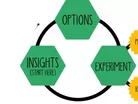Follow the techies to embrace cultural change

As someone running a successful business you may not think there is much a software engineer could teach you about management. But one of management's hardest tasks, cultural change, is complex, intangible and often a moving target. These are precisely the types of problems that software engineers have been grappling with since the dawn of computing. For that reason alone, as business owners and leaders we can look to the skills they have been fine tuning for decades and apply them to other business problems. Here are five proven techniques that you can start to apply across your business, but are particularly powerful when trying to accelerate cultural change.
Set up experiments
Facebook is testing a new form of Like button. They hypothesise that this will improve user experience, testing it first with in Ireland and Spain. If the feedback suggests that they were correct, then they’ll roll it out more broadly. If not, they may adapt and test again before going further.
Apply the same to cultural change. We may believe that a new team structure or compensation approach may improve things for our company. Try it out first. Find a team willing to experiment and find ways to monitor and check the results.
Inject a virus - in a good way
Software viruses are generally hated, but can be constructive. Try making a change ‘Guerrilla-style’ and see if it breeds and multiplies. You could throw up a ‘Kudo Wall’ in your team space; or instigate a week-by-week happiness index. Maybe your ‘culture hack’ will spread like a virus or maybe the ‘organisational antibodies’ will kill it. The point is to try.
Make work visible
Coders love the Lean technique of “kanbans”. Get your team’s work up on a wall so everyone can ‘see the whole’. With the knowledge shared, change teams can harness their collective intelligence to resolve ‘blockers’ to progress, spot and discuss dependencies between tasks, or detect when people might be overloaded or have spare capacity.
Co-create
Software designers have long been sitting together with customers to format screens and agree the workings of online tools - testing each new prototype iteration as they go. Apply the same to culture change. Work out your change plan together. Get those designing, executing and impacted by the change to create the approach. Use highly participative approaches such as Lego Serious Play, or Conteneo’s Innovation Games to get people engaged on an equal footing.
Show & Tell
Software teams use regular ‘Show & Tell’ sessions to show off their latest wares for users and executives to review. Why not a try a Culture Show & Tell? Hold a regular open session for the groups impacted by your change initiative. Perhaps you could play video interviews from staff using a new process, or maybe share a draft outline of a training plan, or the interim findings of an office location strategy. The point is to demonstrate transparency, invite feedback, and build trust and your approach as you move forward with organisational changes.
Richard Atherton is a change consultant who has worked with the BBC, Sainsbury’s, Barclays and City of Westminster. He is running a training session on these techniques in London from 19-20 November in partnership with agile and digital product consultancy Unboxed Consulting. Book here to secure your place on the course.
Follow @BizReviewEurope
Image courtesy of Jason Little at leanchange.org



